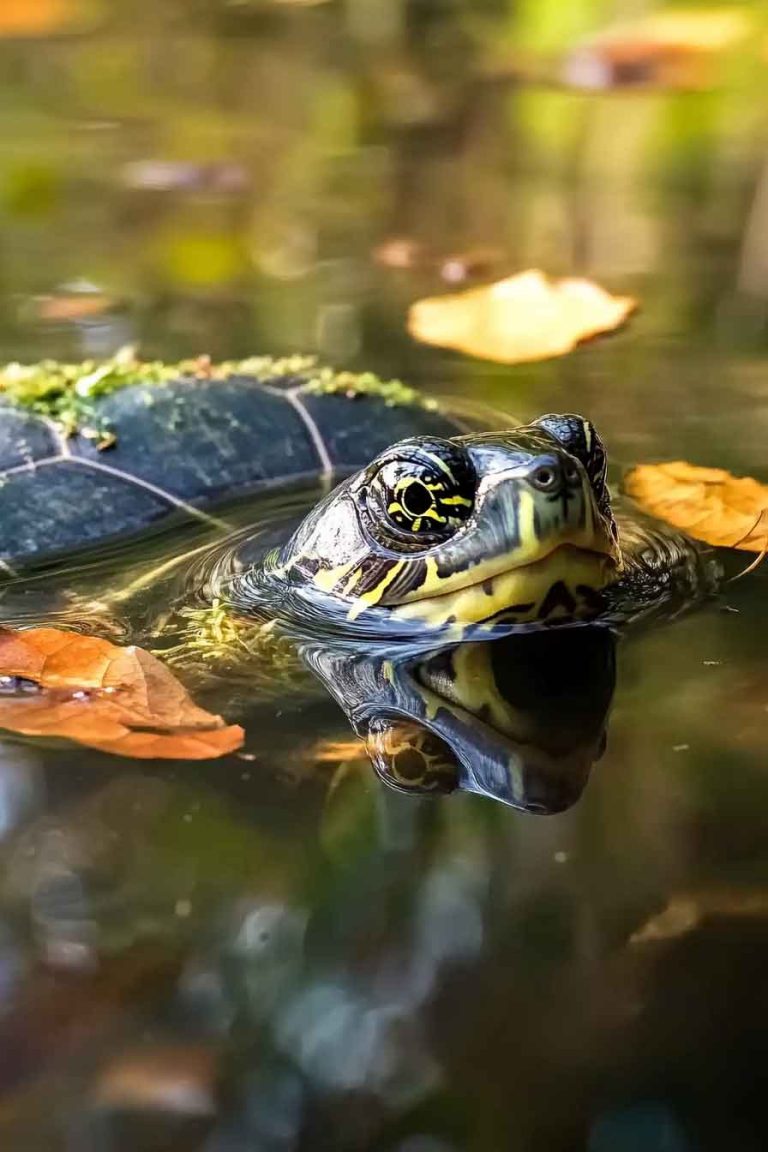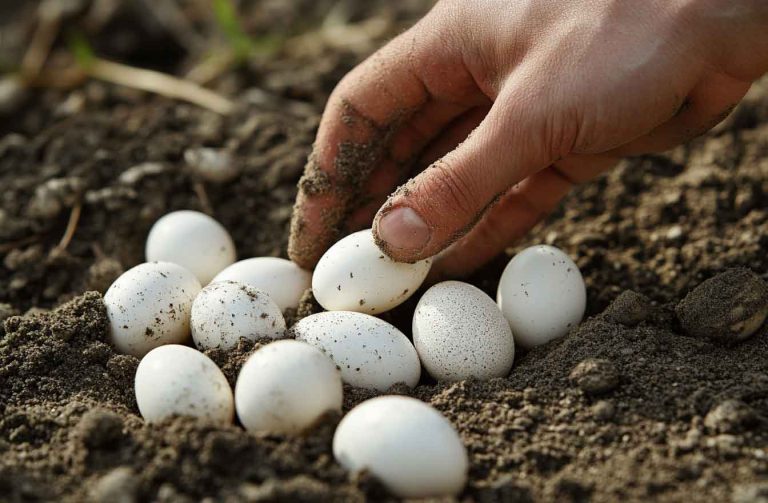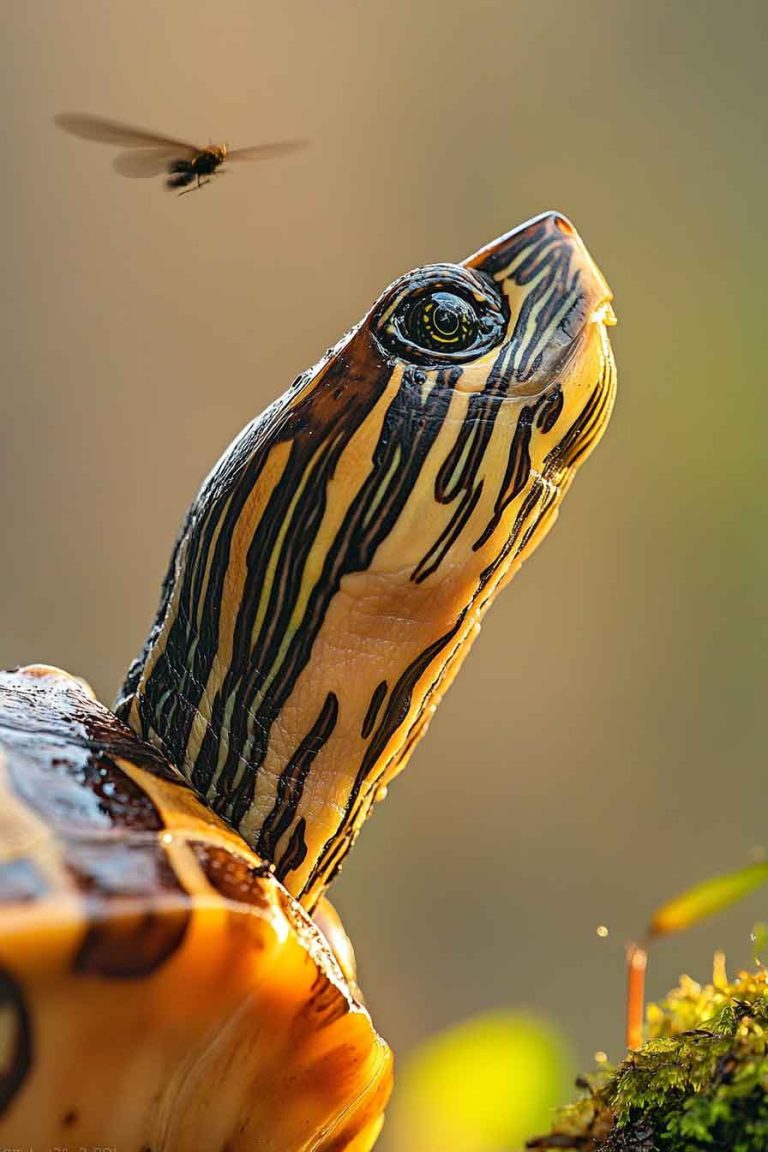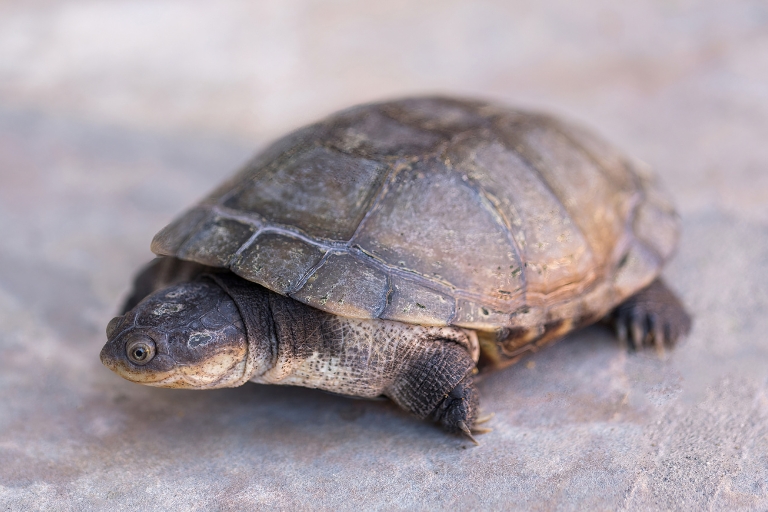How to Care for Your Red-Eared Slider Like a Pro – Avoid These Costly Errors
Hey there, turtle lovers! If you’re reading this, you’re probably a proud owner of a red-eared slider or thinking about bringing one into your home. I’ve been caring for these adorable aquatic turtles for years, and let me tell you, they’re a joy to have around—but they do need some specific care to thrive. In…
Hey there, turtle lovers! If you’re reading this, you’re probably a proud owner of a red-eared slider or thinking about bringing one into your home. I’ve been caring for these adorable aquatic turtles for years, and let me tell you, they’re a joy to have around—but they do need some specific care to thrive. In this guide, I’m sharing my top tips on how to care for your red-eared slider the right way, so you can keep your shelled friend healthy and happy for years to come.
Setting Up the Perfect Tank for Your Red-Eared Slider
When I got my first red-eared slider, I quickly learned that their tank is their entire world. A proper setup is crucial to mimic their natural habitat and keep them healthy. Here’s what you need to know:
Tank Size Matters
Red-eared sliders grow to about 6-8 inches (sometimes even larger!), so they need plenty of space to swim and explore. I recommend a tank that holds at least 10 gallons of water per inch of shell length. For an adult slider, that’s a minimum of 60-80 gallons. Trust me, a cramped tank leads to stress and health issues, so go bigger if you can!
If you’re starting with a baby turtle, you might be tempted to get a smaller tank, but they grow fast. I made the mistake of starting with a 20-gallon tank, and within a year, I had to upgrade. Save yourself the hassle and invest in a larger tank from the get-go.
Water Depth and Quality
Red-eared sliders love to swim, so the water in their tank should be deep enough for them to dive and move freely. I keep the water depth at least 1.5 times the length of my turtle’s shell, which gives them room to play. For an adult slider, this means about 10-12 inches of water depth.
Water quality is a big deal. These turtles are messy eaters and produce a lot of waste, which can quickly make the water dirty. I use a canister filter rated for at least twice the tank’s capacity to keep the water clean. You’ll also need to do partial water changes (25-50%) every week to maintain good water quality. I test the water regularly with a kit to ensure the pH stays between 6.5 and 7.5, and I keep ammonia and nitrite levels at zero.
Basking Area Setup
Your red-eared slider needs a dry spot to bask and soak up heat and UV rays. I set up a basking platform using a sturdy dock or a stack of flat rocks that’s easy for my turtle to climb onto. The basking area should be completely out of the water and large enough for your turtle to stretch out comfortably.
I use a heat lamp to keep the basking spot at 85-90°F and a UVB bulb to provide essential ultraviolet light, which helps them produce vitamin D3 for healthy shell and bone growth. I replace the UVB bulb every 6 months, even if it’s still working, because the UVB output weakens over time.
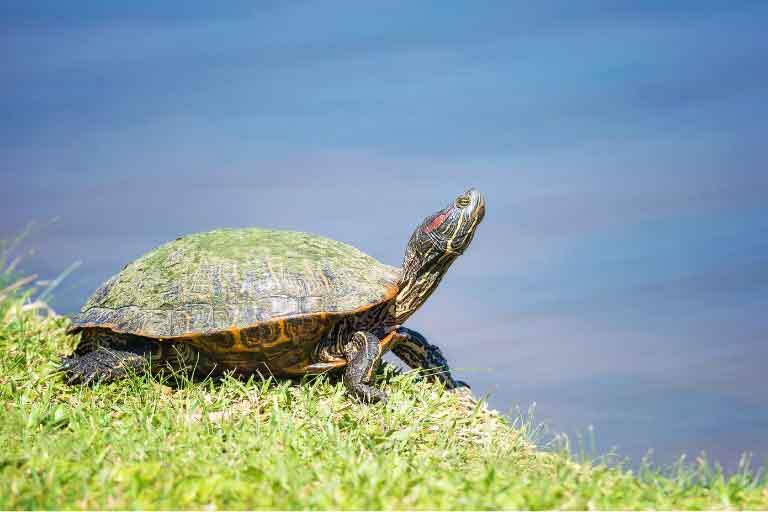
Understanding Their Water Needs
Red-eared sliders are semi-aquatic, which means they spend most of their time in water but need to come out to bask and breathe. Getting their water environment right is key to their health, and I’ve learned a few tricks over the years to make it easier.
Why Water Is So Important
Water isn’t just a place for your turtle to swim—it’s critical for their overall well-being. I’ve noticed my sliders use the water to regulate their body temperature, especially during hot days when they dive in to cool off. Water also helps them eat, as they don’t produce saliva and rely on it to swallow their food.
I make Rationale: Keeping the water clean and at the right temperature (75-80°F) ensures your turtle’s metabolism stays on track and prevents issues like shell rot or respiratory infections.
How Much Water Do They Need?
As a rule of thumb, provide 10 gallons of water per inch of shell length, measured vertically from top to bottom. For a 6-inch red-eared slider, that’s 60 gallons of water. I also make sure the tank has enough water depth for swimming and diving, as I mentioned earlier. If you’re housing more than one turtle, add an extra 10 gallons per inch for each additional turtle to avoid crowding.
Feeding Your Red-Eared Slider the Right Way
Feeding my red-eared sliders is one of my favorite parts of caring for them—it’s so fun to watch them dive for their food! But I’ve learned that what you feed them and how often you do it makes a huge difference in their health. Here’s how I keep their diet on point.
What to Feed Your Turtle
Red-eared sliders are omnivores, which means they eat both plants and protein. When I first started, I wasn’t sure what balance to strike, but I’ve figured out a good mix over time. For adult sliders, I aim for a diet that’s about 50% vegetables, 25% protein, and 25% commercial turtle pellets. For babies and juveniles, I increase the protein to about 40% since they need it for growth.
Here’s what I feed my turtles:
- Vegetables: I offer leafy greens like romaine lettuce, kale, and dandelion greens. I also toss in aquatic plants like duckweed or water hyacinth, which they love. Avoid iceberg lettuce—it’s low in nutrients.
- Protein: I give them small amounts of feeder fish (like guppies), earthworms, or cooked shrimp. Occasionally, I’ll offer a boiled egg or a tiny bit of cooked chicken, but I keep these to a minimum to avoid too much fat.
- Commercial Pellets: I use high-quality turtle pellets as a staple because they’re formulated with the vitamins and minerals sliders need. Look for brands with at least 30% protein for juveniles and 20-25% for adults.
I always make sure to feed them in the water, as red-eared sliders need to be submerged to swallow properly. To keep the tank cleaner, I sometimes use a separate feeding container for messy foods like fish.
How Often and How Much to Feed
When my sliders were babies, I fed them once a day, offering as much as they could eat in about 15 minutes. Now that they’re adults, I feed them every other day to prevent obesity, which is a common issue with overfed turtles. I stick to a portion size that’s roughly the size of their head (minus the neck) per feeding.
I also make sure to vary their diet to keep things interesting and ensure they’re getting a range of nutrients. For example, one day might be pellets and greens, and the next feeding might include some feeder fish. This keeps my turtles excited about mealtime!
Supplements for a Healthy Turtle
To keep my sliders’ shells and bones strong, I add calcium supplements to their food about once a week. I either dust their pellets with a calcium powder designed for reptiles or offer a cuttlebone they can nibble on. I also use a multivitamin supplement once every two weeks to cover any nutritional gaps, especially if I’m relying heavily on commercial pellets.
One thing I’ve learned: always check with a vet before adding supplements, as too much can be harmful. I had a scare early on when I overdid the calcium, and my turtle started developing shell issues. A quick vet visit set me straight!
Common Feeding Mistakes to Avoid
I’ve made my fair share of mistakes when feeding my red-eared sliders, and I want to help you avoid them. Here are a few things I’ve learned to steer clear of:
- Overfeeding: It’s tempting to feed your turtle every time they beg (those little faces are hard to resist!), but too much food leads to obesity and water quality issues. Stick to a schedule and portion size.
- Feeding Only Pellets: While pellets are convenient, relying on them exclusively can lead to nutritional deficiencies. I always mix in fresh veggies and occasional protein to keep their diet balanced.
- Dirty Feeding Habits: Feeding in the main tank without a strong filter can make the water filthy fast. If you don’t have a separate feeding tank, make sure your filter is up to the task, and clean up any uneaten food right away.
Keeping Your Red-Eared Slider Healthy
I’ve learned that a healthy red-eared slider is an active, curious one, but it takes some vigilance to spot issues early. Here’s how I keep my turtles in tip-top shape.
Regular Health Checks
I check my sliders weekly for signs of trouble. Here’s what I look for:
- Shell Condition: Their shell should be hard, smooth, and free of cracks, soft spots, or algae buildup. If I notice anything off, like flaking or discoloration, I clean the shell gently with a soft toothbrush and consult a vet if it persists.
- Eyes and Nose: Clear, bright eyes and a clean nose are good signs. Cloudy eyes, swelling, or discharge could mean an infection, which needs a vet’s attention ASAP.
- Behavior: My turtles are usually active, swimming or basking happily. If they’re lethargic, not eating, or hiding too much, something might be wrong—could be water quality, temperature, or illness.
I also take my turtles to a reptile vet for an annual checkup. Trust me, finding a vet who specializes in turtles is a game-changer. They’ve caught small issues I missed, like early signs of vitamin A deficiency.
Common Health Issues to Watch For
Red-eared sliders are hardy, but they can develop problems if their care isn’t spot-on. Here are a few I’ve dealt with:
- Shell Rot: Caused by dirty water or poor basking habits, this shows up as soft or discolored patches on the shell. I keep the tank clean and ensure my turtles bask enough to prevent it.
- Respiratory Infections: If your turtle is floating lopsided, wheezing, or staying out of water too much, it might have a respiratory issue. I once had a turtle get sick because the water was too cold, so I now double-check that it stays between 75-80°F.
- Vitamin Deficiencies: Without enough calcium or UVB light, sliders can develop weak shells or metabolic bone disease. I stick to my supplement and UVB bulb schedule to avoid this.
If you notice any of these, don’t wait—get your turtle to a vet. I learned the hard way that small problems can escalate fast.
Handling Your Red-Eared Slider Safely
I’ll be honest: red-eared sliders aren’t cuddly pets, and handling them too much can stress them out. But sometimes, you need to pick them up for tank cleaning or health checks. Here’s how I do it safely:
- Wash Your Hands: I always wash my hands before and after handling my turtles to avoid spreading germs (they can carry salmonella, so this is non-negotiable).
- Hold Gently but Firmly: I place one hand under their belly and the other on top of their shell, holding them over a soft surface in case they wiggle. Never grab them by the legs or tail—it can hurt them.
- Keep It Brief: I limit handling to a few minutes, just enough to check their health or move them. My turtles are happiest when they’re back in their tank, swimming away.
I also avoid handling babies too often—they’re more delicate and stress easily. With my adult sliders, I’ve noticed they’re calmer if I approach slowly and don’t make sudden movements.
FAQs About Red-Eared Slider Care
Over the years, I’ve gotten tons of questions from other turtle owners. Here are some of the most common ones I hear:
1. How long can my red-eared slider stay out of water?
Your red-eared slider can stay out of water for about 8 hours, as long as the temperature and humidity are suitable. I make sure my turtles have access to water after a few hours of basking or roaming to prevent dehydration.
2. Do red-eared sliders need a heater in their tank?
Yes, absolutely! I use a submersible aquarium heater to keep the water between 75-80°F, which is ideal for their metabolism and health. Without it, they can get sluggish or sick, especially in cooler climates.
3. Can I keep more than one red-eared slider in the same tank?
You can, but it’s tricky. I’ve had success keeping two sliders together, but only because I have a large tank (100+ gallons) and watch for signs of bullying. Each turtle needs at least 10 gallons per inch of shell, and you’ll need to monitor them closely to ensure they’re not fighting over territory.
4. How do I know if my turtle is happy?
A happy slider is active, eats well, and basks regularly. If mine are swimming, exploring, or climbing onto their dock without hesitation, I know they’re content. Stress signs include hiding a lot, refusing food, or trying to escape the tank.
Final Word
Caring for a red-eared slider is a rewarding journey, and I hope my tips have given you the confidence to do it the right way. By setting up a spacious tank, feeding them a balanced diet, and keeping an eye on their health, you’ll have a happy, thriving turtle for years to come. I’ve made mistakes along the way, but each one taught me how to be a better turtle parent.
If you have any questions or want to share your own turtle stories, drop them in the comments—I’d love to hear from you! Keep those tanks clean and your sliders smiling!

